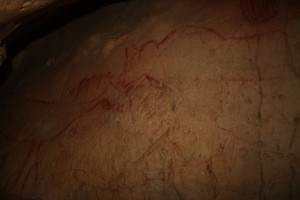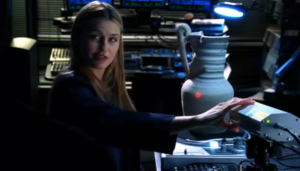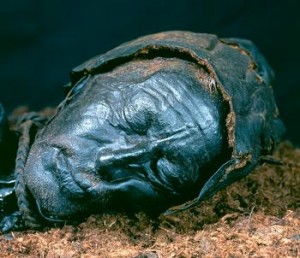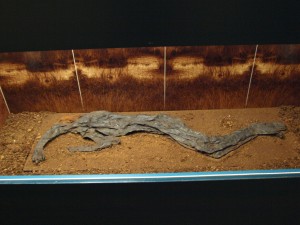Archaeology Essentials tells us that the first step to understanding how symbols were used in past cultures is to establish a place, “by marking and delimiting territory and the territory of the community…thereby constructing a perceived landscape.” (Renfrew 250) One way to establish a sense of place is by documenting its acoustics, through an experimental archaeology process called archaeoacoustics, or acoustic archaeology. “Because spaces and buildings are long lasting, they preserve and memorialize the relationship between aural architecture and culture, conserving within the acoustics of a space the attitudes to sound of the context within which the building was created, and space was defined as a place.” (Till, Sound archaeology 295) Archaeoacoustics can give archaeologists a better perspective of past cultures by determining why they might have placed symbols of their culture in particular places. An example of acoustic archaeology is documented in Rupert Till’s article Sound archaeology: terminology, Palaeolithic cave art and the soundscape, in which Till and his team explored five caves in northern Spain that feature Palaeolithic art and or motifs. Their overall goal was to prove that the location of the cave paintings and engravings were linked to sound. The researchers were interested in acoustics relating to music within the caves. They wanted to determine if the caves themselves were chosen as spaces in which to spend time due to their ability to amplify music. The areas inside the caves with and without painting or engravings were tested in order to see if the placement of the art was due to the acoustics of the cave.

An image of a horse facing an Aurochs with a geometric design visible above the aurochs’ back, taken in the La Pasiega cave, one of the five caves that Till and his team researched.
Archaeoacoustics can grant archaeologists a view into the life of the peoples that they are studying by giving them ability to hear what the past peoples heard, and has been used across the globe, most famously in places like Stonehenge. Because of its detective-like powers, acoustic archaeology has also been used in detective shows. In fact, the reason why I first became interested in acoustic archaeology was because I was watching CSI: Crime Scene Investigation. The episode I was watching, Committed (season 5, episode 21), was about the murder of a patient in a psych ward. In the episode, a suspect was making a pot on a pottery wheel during an altercation with a nurse. The lead detective decided that acoustic archaeology would be able to determine what was said during their fight due to the wheel’s rotation. They used a Doppler laser and an optical transducer in order to get sounds captured while the pot was being made. After processing the noise that they received from the pot, they were able to actually hear what was being said during the altercation.
Though it seemed a little far-fetched, like every episode of CSI, and was “busted” by Mythbusters, the episode got me interested in the field of archaeoacoustics. I definitely think that acoustic archaeology is a technique that will be improved upon and will continue to help archaeologists learn more about the past.
References:
Renfrew, Colin, and Paul G. Bahn. Archaeology Essentials: Theories, Methods, and Practice. New York, NY: Thames & Hudson, 2010.
Till, Rupert. “Sound Archaeology: Terminology, Palaeolithic Cave Art and the Soundscape.” World Archaeology 46.3 (2014): 292-304.
Goldfinger, Sarah, Richard J. Lewis, and Uttam Narsu. “Committed.” CSI: Crime Scene Investigation. CBS. 28 Apr. 2005.
Photo Sources:
“La Pasiega.” Songs of the Caves. <http://songsofthecaves.wordpress.com/>.
Goldfinger, Sarah, Richard J. Lewis, and Uttam Narsu. “Committed.” CSI: Crime Scene Investigation. CBS. 28 Apr. 2005.
Additional Information:
http://vodlocker.com/op8e3e4bm9sr (Mythbusters “Killer Cable Snaps”) or http://kwc.org/mythbusters/2006/10/episode_62_killer_cable_snaps.html (Summary of findings on episode)



